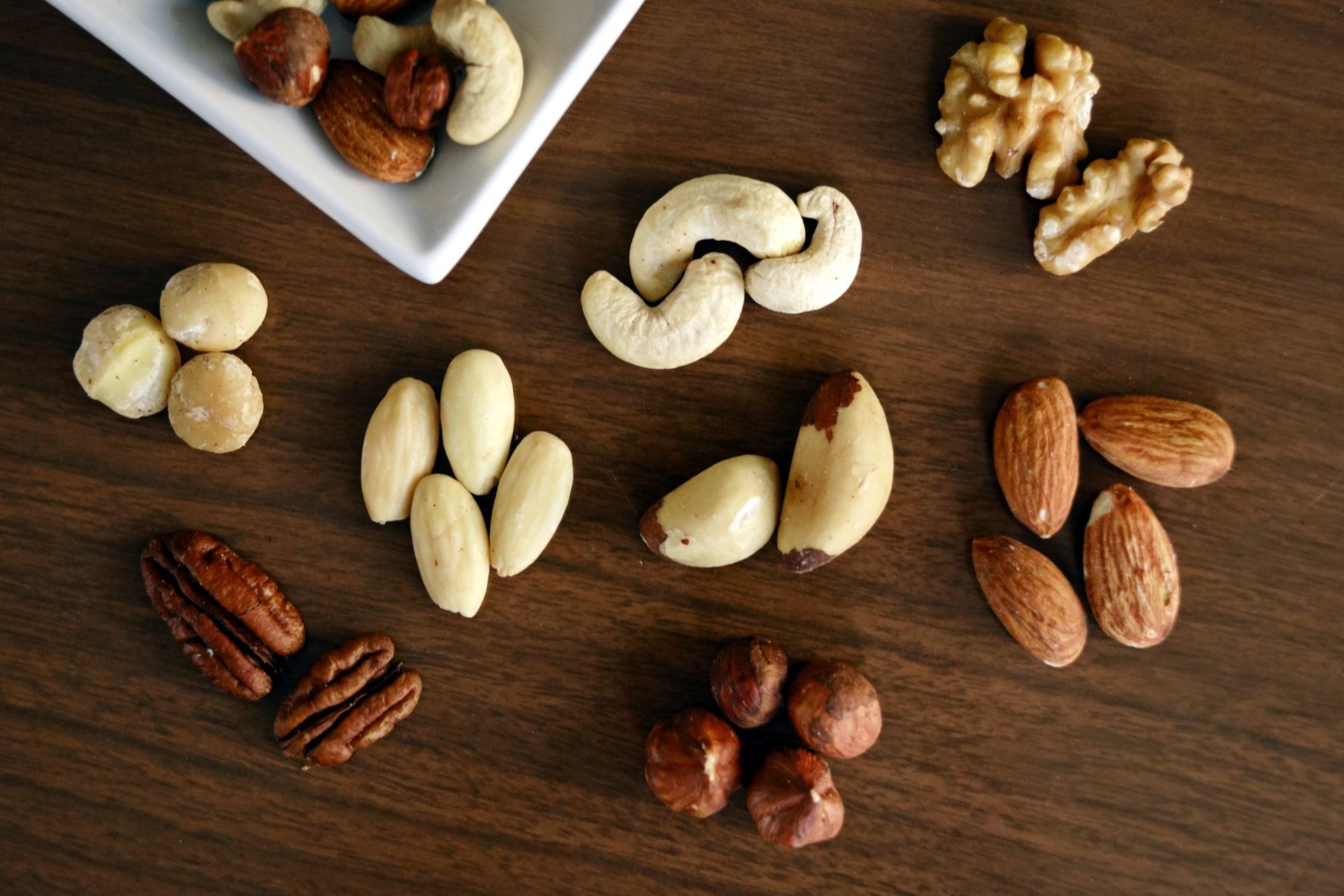Go Nuts!
Getting the most health benefits from nuts!

Nuts are great! I want you to go crazy for them. But, there is a “but…” If you’ve been keeping up with my blogs, are you really that surprised that something good can come with a caveat?
Nuts have TONS of health benefits including the ability to [1]:
- Improve cholesterol
- Prevent arrhythmias
- Reduce blood clotting
- Relax blood vessels
- Raise levels of glucagon (helps with blood sugar handling)
- Contribute to satiety
Here’s the “but.” Raw nuts are hard for the body to digest:
- They contain high levels of phytic acid which binds to minerals in the gastrointestinal tract and causes inflammation in our gut lining. This inflammation can lead to malabsorption of foods.
- Nuts contain enzyme inhibitors which, while are awesome while they are still on the plant, are not easily digested by the human body.
The good news is that no one says you have to eat them
completely raw. There’s a super easy trick to beef up all the nutty goodness: soak your nuts in a saltwater bath! If it sounds like a day at the spa to you, you won’t be disappointed with the results this soak produces.
Saltwater makes nuts so much more digestible, as well as giving them that extra little smidge of flavor that seems to top the cake. Salt has the ability to neutralize both the phytates and enzyme inhibitors found in raw nuts. It also increases the bioavailability of important natural nutrients such as vitamin B, and activates additional enzymes that help increase nutrient absorption.
How to Soak: Instructions and Cheat Sheet from “Now That’s Vegan” [2]
- Place nuts or seeds in a glass or ceramic bowl.
- Fill a measuring cup or pitcher with warm filtered water at a ratio of 2:1 (2 cups water to 1 cup nuts).
- Add a little sea salt to warm filtered water.
- Cover the bowl with a clean cloth and let sit for a specified time as outlined below.
- Drain in a colander and rinse with filtered water.
| Nuts and Seeds | Soaking Time |
|---|---|
| Almonds | 8-12 hours |
| Brazil Nuts | 8 hours |
| Cashews | 2-3 hours |
| Flax Seeds | Don’t Soak, but should be ground before eating to aid digestion |
| Hazelnuts | 8-12 hours |
| Hemp Seeds | Don’t Soak |
| Macadamia Nuts | 2-hours |
| Pecans | 4-6 hours |
| Pine Nuts | Don’t Soak |
| Pistachio Nuts | 4-8 hours |
| Pumpkin Seeds (Hulled) | 8 hours |
| Sesame Seeds | 8 hours |
| Sunflower Seeds (Hulled) | 2 hours |
| Walnuts | 4-8 hours |
How to Get Nuts in Your Diet
- Snack on them - After you soak them, premake “To-Go” packs for yourself using small containers. Then you can grab-n-go, or keep one in your purse or car for whenever you might need a little something to get you by.
- Spread them. Many types of nut and seed butters are commercially available these days. Read the labels carefully to make sure they’ve been made with soaked nuts..
- Sprinkle them. Nuts can add flavor and texture to salads, sandwiches, and whole-grain breakfast cereals.
- Substitute them. Try replacing processed meat with nuts in your meals (check out vegetariantimes.com for recipe suggestions). This substitution has a one-two punch of benefits:
- Reduces the risks associated with eating too much meat
- Reduces the risks associated with eating too few nuts
As with most of my foodie blogs, I recommend that you try to go organic whenever possible to minimize your pesticide exposure (see my blog: Poisoning from Pesticides). Tree and ground nuts are highly susceptible to molds that produce mutagenic and immuno-suppressive metabolites called aflatoxins. Many nut farms also treat with fumigants after the nuts are picked to kill bugs. Mold and toxin contamination (due to pesticides) may very well be the reasons for so many nut allergies these days. All this being said, it may prove difficult to find organic nuts as less than 1% are grown on certified organic farmland. Difficult, but not impossible.
So go nuts for nuts. Buy them (organic if possible), soak them, and eat them like crazy. You will feel great and be an even healthier you!
Sources:
- https://www.health.harvard.edu/nutrition/why-nutritionists-are-crazy-about-nuts
- http://www.nowthatsvegan.com/nuts_and_seeds_soaking-chart/
Don't Miss Out On More!

Heidi Toy FNTP
I help people all over the world heal by identifying and treating the root cause of their body imbalances. Through diet and nutrition, I guide them towards wholeness and balanced lives.
Heidi Toy Functional Medicine Blog














































































































